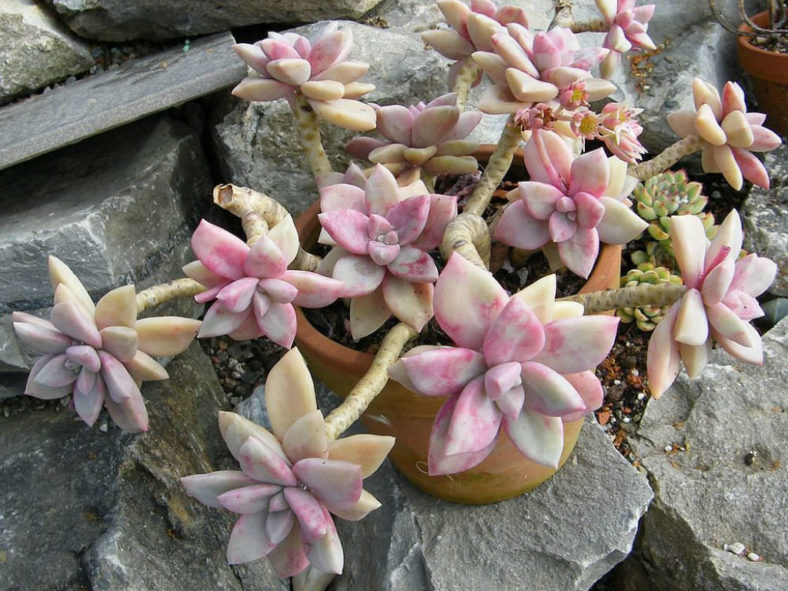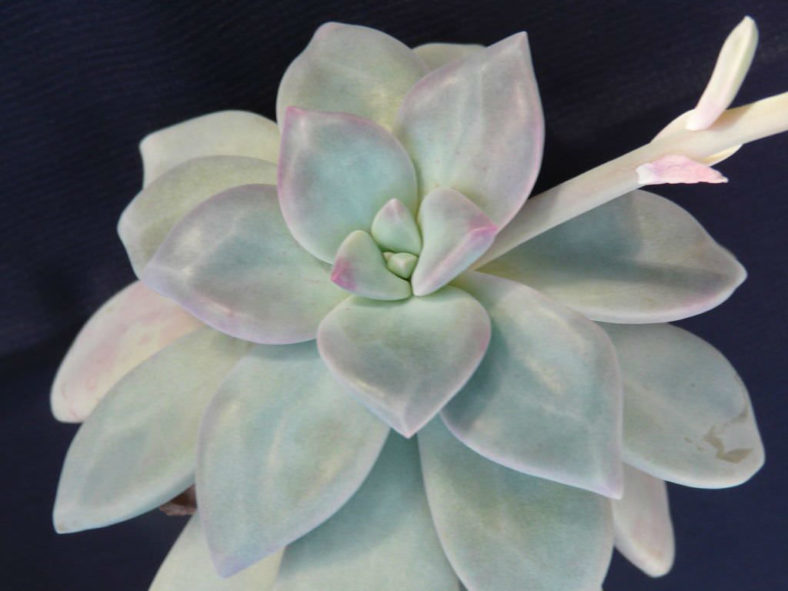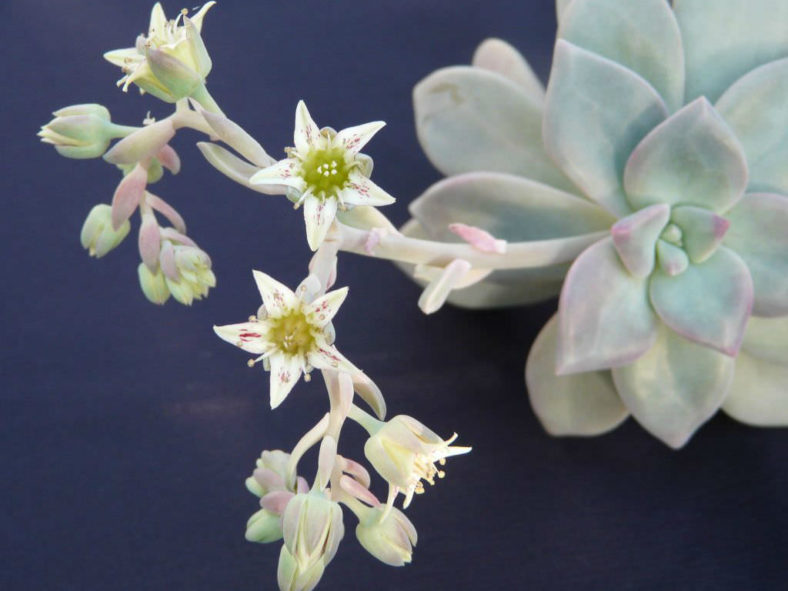Scientific Name
Graptopetalum 'Victor Kane'
Synonym(s)
Graptopetalum kanei, Graptopetalum 'Frank Reinelt', ×Graptoveria kanei, ×Graptoveria 'Kew Marble', ×Graptoveria 'Victor Kane'
Scientific Classification
Family: Crassulaceae
Subfamily: Sedoideae
Tribe: Sedeae
Subtribe: Sedinae
Genus: Graptopetalum
Description
Graptopetalum 'Victor Kane', also known as Graptopetalum 'Frank Reinelt', is a cute succulent that forms compact rosettes of fleshy leaves with powdery coating and lovely pastel coloration. Much of the basal leaves will drop off in older plants, leaving the bare stems. The rosettes can grow up to 4 inches (10 cm) in diameter.
The flowers are small, star-shaped, white with red flecks, and appear in spring. The colors of the leaves and the intensity of the red flecks inside the petals can vary considerably more or less depending on seasons and light.
This succulent is often mistaken for the similar hybrid Graptopetalum 'Purple Haze'. Graptopetalum 'Victor Kane' has thicker leaves with a matte surface, and the red flecks on the petals are broader and more pronounced. However, there are seasons where these two hybrids are impossible to tell apart and seasons when the difference is more prominent.

Hardiness
USDA hardiness zones 9b to 11b: from 25 °F (−3.9 °C) to 50 °F (+10 °C).
How to Grow and Care
The rules for Graptopetalums care are similar to those for most succulents. All require lots of sunlight to look their best. They require gritty, porous soil with excellent drainage. Water regularly over summer and let the soil dry out between waterings. Minimal water is required over winter. Overwatering is a cause of root rots, and the plant can get several pest infestations. Fertilize once during the growing season with a balanced fertilizer diluted to 1/4 strength.
Graptopetalums are generally easily propagated by seeds, leaf cuttings, or offsets. Any rosette that breaks off can root and start a new plant. Even a leaf that drops off will quickly root below the parent plant and produce a new rosette. The new plant feeds off the leaf until it shrivels and falls off. By then, the new little plant had rooted and sprouted new leaves.
See more at How to Grow and Care for Graptopetalum.
Origin
Graptopetalum 'Victor Kane' is a hybrid created by Albert Baynes and results from a cross between Graptopetalum paraguayense and probably Graptopetalum amethystinum.
Links
- Back to genus Graptopetalum
- Succupedia: Browse succulents by Scientific Name, Common Name, Genus, Family, USDA Hardiness Zone, Origin, or cacti by Genus
Photo Gallery
Click on a photo to see a larger version.



